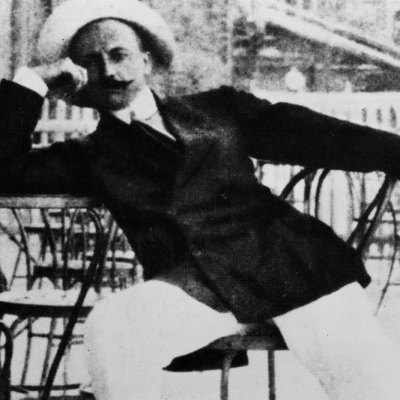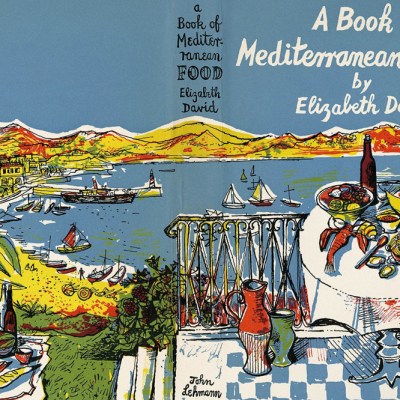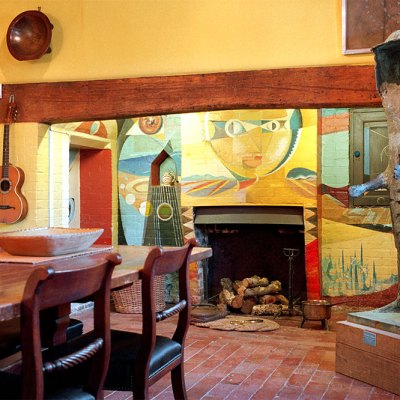Embedded in the splashback above the Aga in the kitchen at Farleys, the farmhouse in East Sussex that was home to Lee Miller and Roland Penrose from 1949, is a tile designed by Picasso. Not the best place to keep a Picasso, perhaps, but then again the couple liked to live among the art that they had accumulated and acquired – and Miller lived most happily in the kitchen. It feels appropriate, then, that the tile depicts a simple smiling face: a grinning household god, or perhaps a reminder to Miller of the guests, Picasso among them, that she had entertained so generously with her cooking.
Cookery was the grounds for Miller’s final, and perhaps most fulfilling, reinvention. Her early years as a fashion model and artist’s muse had given way, in the 1930s and ’40s, to a successful career as first a fashion then a war photographer, her images usually infused with the Surrealist moods that she understood so well. The story of her hard-edged professionalism in photographing Dachau after liberation, and the private trauma that ensued, has often been told. Less well known until recently was the comfort and purpose that she found in later decades through food. ‘Cooking is pure therapy,’ she once said.
The kitchen at Farleys, East Sussex, with a tile by Picasso above the Aga. Photo: Tony Tree; © Lee Miller Archives, England 2020. All rights reserved. www.leemiller.co.uk
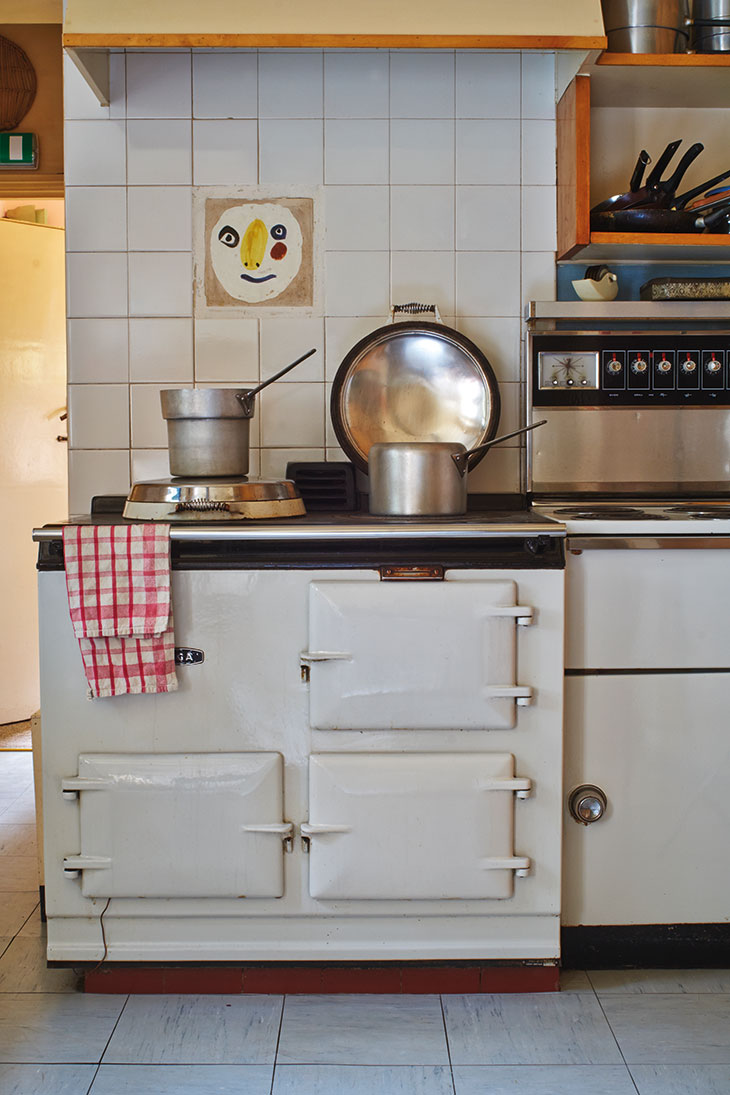
That oversight has changed now, thanks to the publication in 2017 of Lee Miller: A Life with Food, Friends and Recipes (Grapefruit Publishing), an enticing smorgasbord of biography, memoir and archive material assembled by Miller’s granddaughter (and director of Farleys House and Gallery) Ami Bouhassane. The book contains numerous recipes developed by Miller, as well as historical magazine articles on food written by her or celebrating her culinary pursuits at Farleys. Most intriguing, though, is its account of a life told through food. You are what you eat, they say – but rarely does that become a principle of biography.
Cooking rooted Miller at Farleys, at least at the weekends when she and Penrose rolled in from London with yet another flock of house guests. There she cultivated a vast vegetable garden and drew on the resources of the dairy farm, the latter providing rich treats for visitors from London weary of post-war rationing. ‘We try to share the blessing of our farm with pop-eyed guests,’ she wrote, ‘who clamour to forget that purists don’t follow one creamy dish with another.’ Like Elizabeth David, whose appointment as food writer at Vogue in 1953 deprived Miller of further writing commissions, she encapsulates the attitude of not just making do in the post-war kitchen but of aspiring to cook better. In one wonderful list that appeared in an article for Vogue in 1947 she imagines asking a friend to bring her provisions: ‘Tomato [ketchup], Worcestershire sauce, horseradish sauce and real Mayonnaise (they’ll do wonders to a hospital menu), smoked trout, pate de Foie Gras […]’.
For all that it grounded her, food was also a continual quest for Miller. From the recipe competitions she entered (and frequently won) in the 1960s to her efforts to recreate, by flavour memory alone, a rice pudding she had tasted in Egypt before the war, she took an experimental, omnivorous approach that carried something of an American pragmatism and proactivity into the kitchen. Miller’s family and friends teased her about her fondness for gadgets, which in her extensive armoury included a runner-bean slicer and an Icepet ice shaver; among the plays that Penrose would write for the farm staff, family and other guests to perform just before Christmas was The Revenge of the Muddles Master, in which a marvellous machine got the hots for Miller’s deep freeze.
Lee Miller, photographed in Egypt in 1939 by Roland Penrose. © Lee Miller Archives, England 2020. All rights reserved. www.leemiller.co.uk
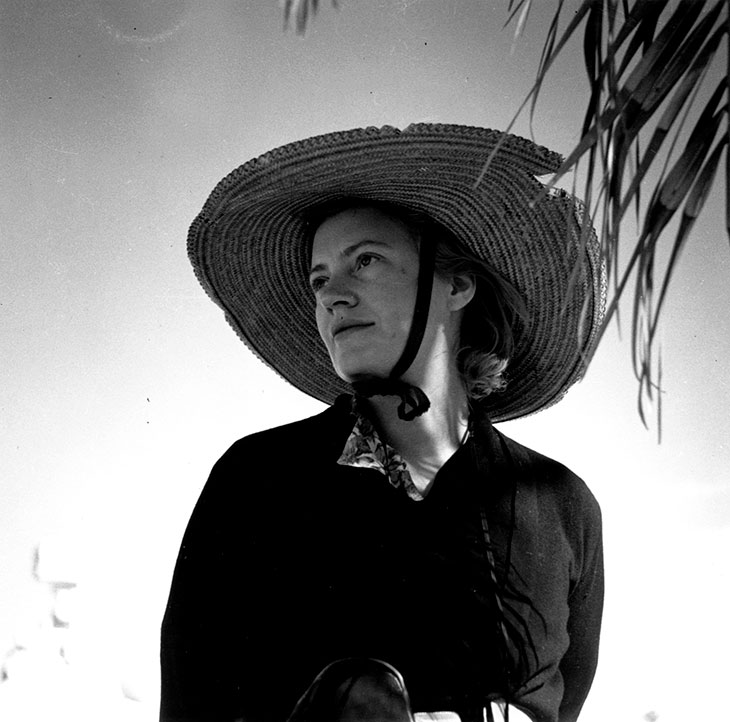
That’s not to say that Miller was a Heath Robinson of the home front; her knowledge of techniques, nutrition and international cuisines, coupled with relentless research, transformed her into what might be termed a practical food historian. In the late 1950s she trained in Paris for six months in Cordon Bleu cookery and by the late ’60s Penrose had erected a library to contain her ever-growing cache of cookbooks. She often consulted dozens of these in planning a single dish, and copied out more than 1,200 favoured recipes into small notebooks. She planned ahead carefully, was savvy about preserves and not letting ingredients go to waste, and embraced the convenience of the deep freeze; her unpublished cookbook, rediscovered in note form by Bouhassane, was to have been titled The Entertaining Freezer.
All the planning that went into meals was, it seems, a counterpoint to the capricious nature of many of the house guests (artists!) as well as to Miller’s private turmoil. At times, as she well knew, the drink would take over – and when it did, instructions would be in place for Patsy Murray, the nanny-turned-housekeeper, to pick up the pieces. Above all, though, Miller was determined to gratify and even inspire her guests. She devised special dishes for artists, such as ‘sesame chicken for Miró’, and satisfied Picasso’s craving to sample ‘Theee Eeeenglish Chreeestmas Puuuding’.
It is not such a leap to describe Lee Miller’s cooking as an art, and one that was frequently performed for artists and other cultural figures. The visual appeal of dishes and their presentation on the table were of paramount importance to her. Some, such as the oft-noted ‘cauliflower breasts’, took up the friskiness of Surrealism, but there could also be mischief in their titles and ingredients: ‘green goddess’ guacamole became ‘green bitch’ with the addition of Angostura rum.
Most of us have played a version of that parlour game that involves devising a fanciful dinner party peopled by the illustrious dead. But no one ever questions who would do the cooking. At my own fantasy feast, it would certainly be Lee Miller.
Following its closure due to the Covid-19 pandemic, which has resulted in substantial loss of revenue, Farleys House and Gallery has launched a crowdfunding appeal in the hopes of securing the future of the site. The fundraising target for the month-long ‘Help Farleys survive’ appeal is £25,000. Visit the Farleys website to learn more.
From the June 2020 issue of Apollo. Preview and subscribe here.
